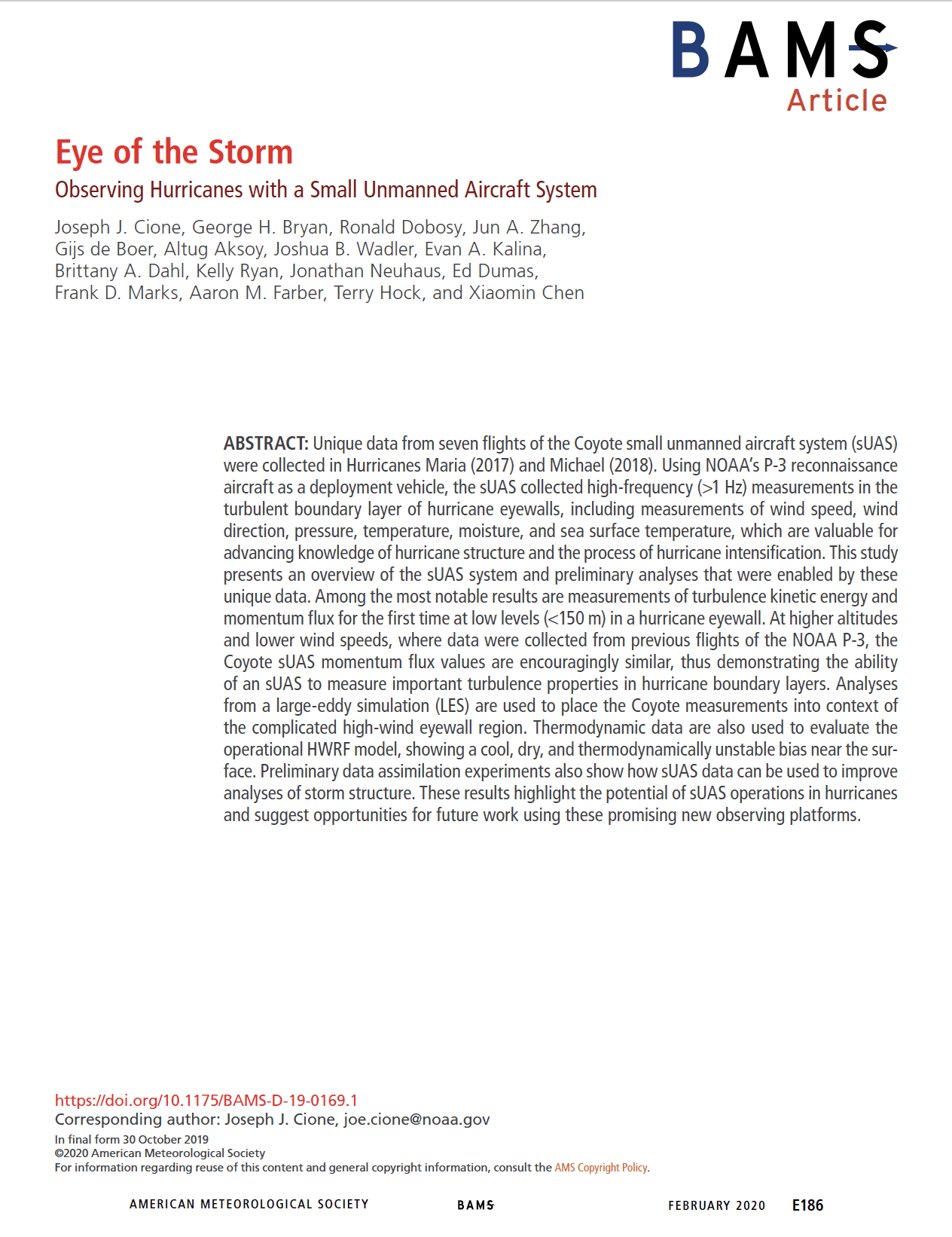Cione, J. J., Bryan, G. H., Dobosy, R., Zhang, J. A., de Boer, G., Aksoy, A., … & Chen, X. (2020). Eye of the storm: observing hurricanes with a small unmanned aircraft system. Bulletin of the American Meteorological Society, 101(2), E186-E205.
Abstract: Unique data from seven flights of the Coyote small unmanned aircraft system (sUAS) were collected in Hurricanes Maria (2017) and Michael (2018). Using NOAA’s P-3 reconnaissance aircraft as a deployment vehicle, the sUAS collected high-frequency (>1 Hz) measurements in the turbulent boundary layer of hurricane eyewalls, including measurements of wind speed, wind direction, pressure, temperature, moisture, and sea surface temperature, which are valuable for advancing knowledge of hurricane structure and the process of hurricane intensification. This study presents an overview of the sUAS system and preliminary analyses that were enabled by these unique data. Among the most notable results are measurements of turbulence kinetic energy and momentum flux for the first time at low levels (<150 m) in a hurricane eyewall. At higher altitudes and lower wind speeds, where data were collected from previous flights of the NOAA P-3, the Coyote sUAS momentum flux values are encouragingly similar, thus demonstrating the ability of an sUAS to measure important turbulence properties in hurricane boundary layers. Analyses from a large-eddy simulation (LES) are used to place the Coyote measurements into context of the complicated high-wind eyewall region. Thermodynamic data are also used to evaluate the operational HWRF model, showing a cool, dry, and thermodynamically unstable bias near the surface. Preliminary data assimilation experiments also show how sUAS data can be used to improve analyses of storm structure. These results highlight the potential of sUAS operations in hurricanes and suggest opportunities for future work using these promising new observing platforms.
